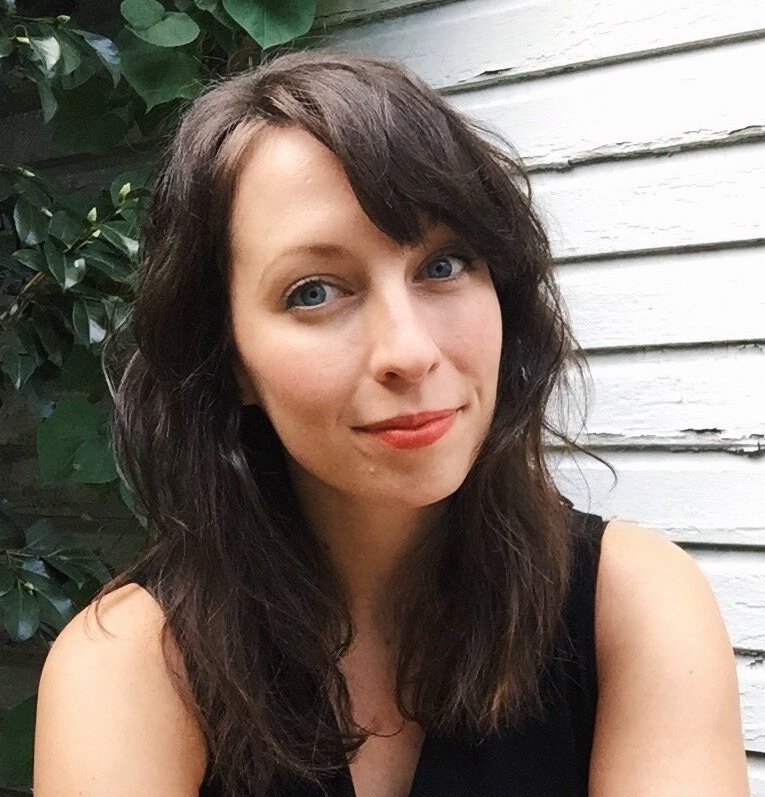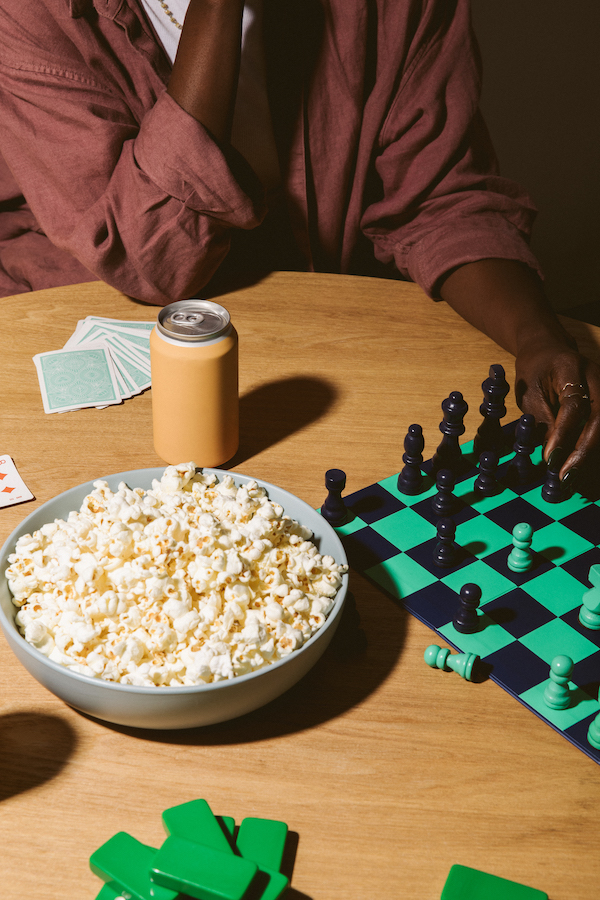
What Are Core Memories—And How Do You Create Them?
I have always been suspicious of memory. Growing up as a child of divorce, I learned early how easily an experience can change through the filter of different minds. The facts of the story might remain unchanged, but the meaning and the details get jumbled, lost, or fully reinvented as a person relives them.
“Growing up as a child of divorce, I learned early how easily an experience can change through the filter of different minds.”
My brother and I will argue over the most insignificant things from our childhood–whether we remember if a late night diner order was a hamburger, or if a windbreaker was blue–with an outsized and vehement defensiveness that borders on the fanatic. We both know it isn’t really about these details.
When he says, “No, you definitely ordered pancakes,” he means What I remember about this part of our lives and who it makes us is true.
When I say, “I swear, the windbreaker was red!” I mean What this memory means to me, how it shaped who I am, is something I can trust.
Whose memories are correct? In a way, they both are. But the distinct impact behind these memories and the way they formed our identities couldn’t be more different.
“In reality, every memory we have is prone to change, forgetting, and errors in minor details–even when it refers to an important event.”
Jeff Yoo, LMFT at Moment of Clarity Mental Health Center
“In reality, every memory we have is prone to change, forgetting, and errors in minor details–even when it refers to an important event,” says Jeff Yoo, LMFT at Moment of Clarity Mental Health Center. So how does this factor into the idea of “core memories,” or the notion that a powerful memory can shape your personality?
“The idea behind ‘core memories’ is that a powerful memory can shape your personality.”
Core memories are a concept made popular with the 2015 Pixar movie Inside Out. In the movie, Riley, a pre-teen whose family uproots their life in a cross-country move, is guided by five core emotions personified in a kind of inner control room of her mind. Joy, sadness, disgust, anger, and fear each preside over the production and filing of all of Riley’s experiences into long-term memory, and five of the most important of these are her “core memories,” which take the form of brightly lit, lively islands we are meant to understand as key tenets of Riley’s identity.
The idea of the movie is that there are certain (“core”) memories that trigger permanent or semi-permanent foundational pillars of our personalities. While the filmmakers consulted with psychologists and neuroscientists, the concept of “core memories” is not strictly scientifically based.
“Research on mental health issues shows that memories, particularly traumatic ones, do play a significant role in our psychological foundation.”
Research on mental health issues shows that memories, particularly traumatic ones, do play a significant role in our psychological foundation. “Memories can be triggered that are buried in the deepest places of our minds by something as simple as the quality of air we are breathing, a song or melody on the radio,” Yoo told me. There is evidence that strong emotional associations can trigger certain memories because they are activated by our amygdala and hippocampus at almost exactly the same time. Whether this is proof that a person’s selfhood is created from these memories is still up for debate.
“Scientists agree that there is no limit to the number of memories that might become integral to who we are.”
Scientists agree, however, that there is no limit to the number of memories that might become integral to who we are. Nor are we shaped exclusively by memories made in childhood. Even the notion that these memories and their impact on our core selves as fixed is not true: anecdotally, there are myriad ways I have witnessed loved ones overcome childhood fears or significantly change their habits and preferences, all aspects of the human personality that are often so potent we use them as shorthand for our identities.
TL;DR: Our identities aren’t set in any single stone memory.
I grew up with Type A parents who were continually exasperated with my apparent inability to turn in paperwork on time. I missed tons of deadlines and lost forms all through school, and the college application process was nothing short of hell. I came to understand that I was not an organized or detail-oriented person.
“Despite behavior that constantly proved otherwise, my self-image was still one that was formed in high school.“
This was a belief I held about myself well into adulthood, after years of leadership roles and professional management experience should’ve shown me otherwise. And then this year, a fellow preschool mom called me “super together” after I’d made and shared a spreadsheet of summer camp info for the class. The comment floored me. Because despite behavior that constantly proved otherwise, my self-image was still one that was formed in high school.
“By using cognitive behavioral therapy and self-talk, we are able to address and change our reactions to a memory that is firmly imprinted into our memory bank,” Yoo says. “Research suggests that our brains are more likely to focus on stimuli of emotional significance.” Because my struggle to navigate the administrative maze of school deadlines had caused such an emotionally charged time with my family, I internalized these memories as part of who I am, rather than simply an experience I went through.
“There is no way to determine how to make a memory, or how important that memory might be to the people experiencing it.”
There is no way to determine how to make a memory, or how important that memory might be to the people experiencing it. Recently, I told my mom that I made “fruit plate” for dinner, a treat I remember from busy nights during the years when she was a single mom. I sliced oranges, kiwis, and apples, and arranged grapes, cheese, and popcorn around a bowl of strawberry yogurt topped with granola, and presented the meal to my delighted daughter.
My mom was flabbergasted that I not only remembered this, but that it had been a favorite. “Those were the nights when I was too late coming home to cook,” she told me. “Those were the nights I thought I had failed.”
At least in this memory, my brother and I are united: fruit plate was a colorful, delicious dish, one made up of all our favorite foods, often eaten on the coffee table while we got to watch a rare school night cartoon. For us, it was fun and special, giving both of us the sense of being loved and cared for, an outcome my mother wouldn’t have predicted in a hundred years.
Those years of juggling a corporate job and the complicated schedules and needs of two young kids by herself are riddled with moments that my mother saw as “failures,” as moments when balls were dropped and less-than-ideal shortcuts were made. I think learning that her children treasured these times altered the tint on those memories, offering a new interpretation of who she had been then, and how that connects to her identity today.
“As a mother, I am deeply aware of the potential for my actions to influence my child and who she will become.”
As a mother, I am deeply aware of the potential for my actions to influence my child and who she will become. Almost daily, I mess up. I feel a pang of concern that my impatience or inattentiveness in any particular moment will somehow color my daughter’s understanding of who she is. I am, in these moments, also making decisions about who I am, deciding that I am failing, not being good enough.
I overcompensate, telling her how creative her chalk drawings are, calling her an athlete when she runs, pointing out her kindness when she lets the neighbor’s baby pick up one of her toys. I set up elaborate games and make big plans for us to bond and have special moments we’ll remember forever. She almost universally ignores these intentional moments, unmoved and busy with whatever else catches her attention in the time.
“When I’m least expecting it, she reflects back to me the world as she’s actually experiencing it.”
But then, when I’m least expecting it, she reflects back to me the world as she’s actually experiencing it, on her own time. In a recent moment so mundane I can’t even recall where we were or what we were doing, she announced, “Mama, you’re the best mom because you take care of me and give me nose kisses. My favorite thing is your snuggles and you say nice things. That’s why you’re the best.”
If I can choose a core memory, one to believe in, to shape the foundation of who I am, I’ll take that one.
Stephanie H. Fallon is a writer originally from Houston, Texas. She has an MFA from the Jackson Center of Creative Writing at Hollins University. She lives with her family in the Blue Ridge Mountains of Virginia, where she writes about motherhood, artmaking, and work culture. You can find her on Instagram or learn more on her website.




